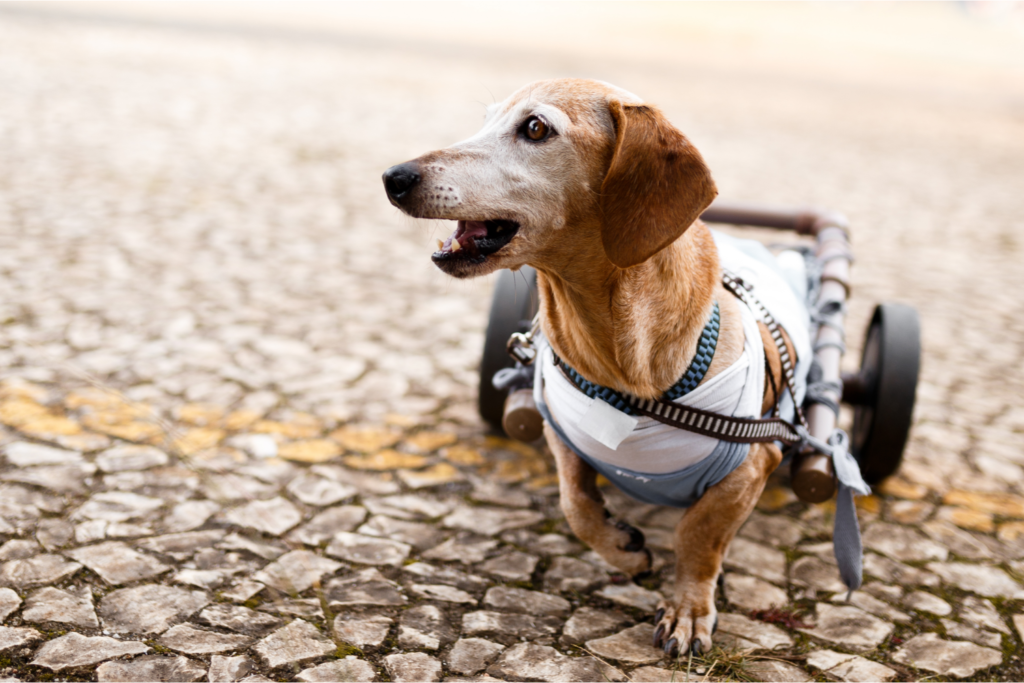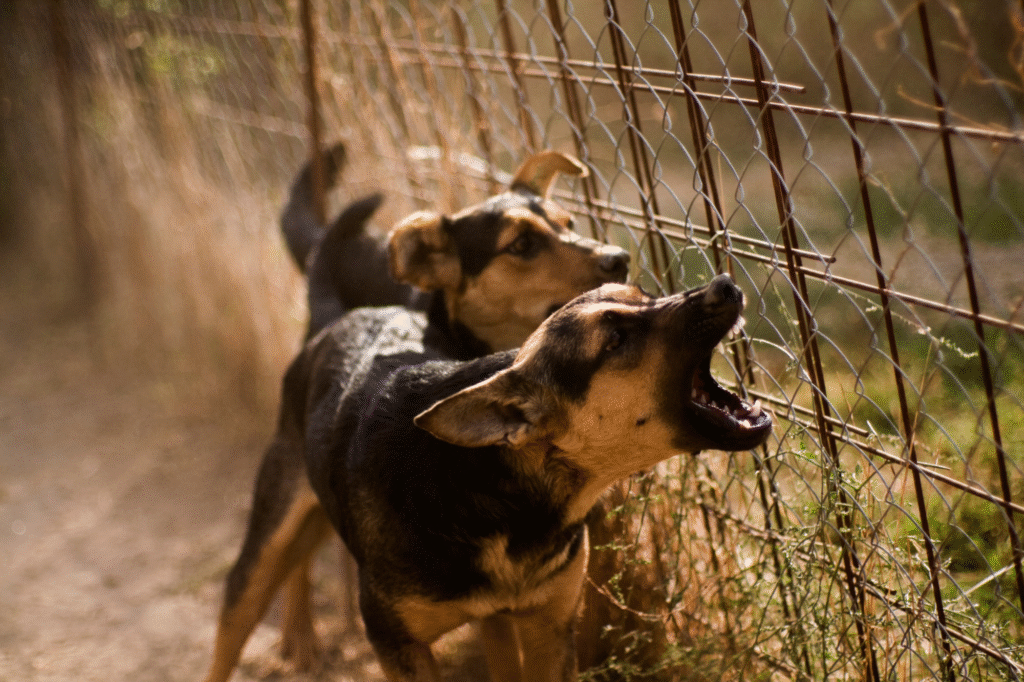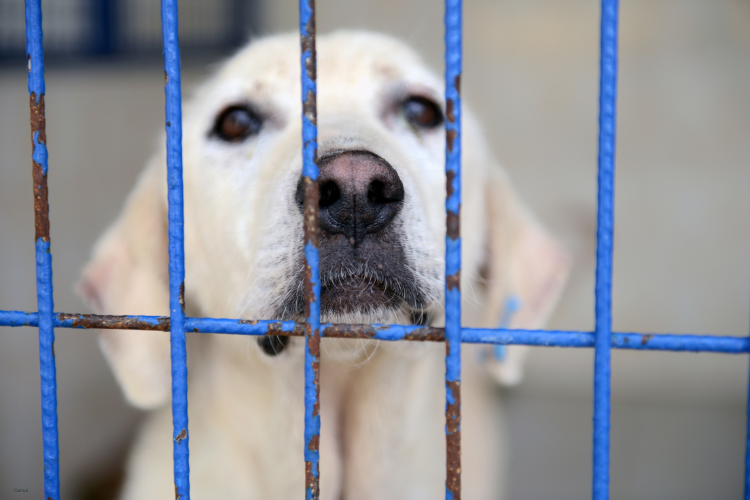Perfectly good dogs sit in shelters because people keep focusing on the wrong things.

Shelters are full of incredible dogs waiting for homes, yet some get passed by again and again for reasons that have nothing to do with their personalities. Sometimes it’s their age, sometimes it’s their look, and sometimes it’s just bad assumptions. The truth is, these dogs could make amazing family members if people stopped caring about superficial details. Here are 14 rescue dogs that keep missing out on homes for the same frustrating reasons.
1. Black-coated dogs get ignored because of outdated superstition.

Many shelters report black dogs stay longer than lighter-colored ones, a phenomenon known as “black dog syndrome.” According to the American Society for the Prevention of Cruelty to Animals, this bias is tied to old myths about black animals being unlucky or intimidating. It’s a leftover idea that has no place in modern adoption decisions, yet it still affects how quickly these dogs find homes.
The tragedy is that these dogs are often just as affectionate and well-behaved as any other. Their dark coats photograph poorly under shelter lighting, which makes online profiles less engaging, and people sometimes misinterpret them as “scary” in person. In reality, they’re loving, loyal, and easy to groom. Once adopted, black-coated dogs often surprise owners with their sweet temperaments and calm energy, proving that myths and aesthetics should never decide their future.
2. Senior dogs are overlooked because people assume they are too much work.

Adopters often assume older dogs mean expensive medical care and limited time left. As stated by the Humane Society of the United States, senior dogs actually have lower energy levels and are often already house-trained, making them easier than puppies. They tend to settle into homes quickly because they’ve experienced family life before and understand routines.
It’s heartbreaking because older dogs are frequently the most grateful, bonding deeply with those who give them a second chance. They’re often surrendered for reasons unrelated to health—like an owner’s relocation or financial issues. People looking for a calm, loving companion often overlook seniors, assuming a puppy will “fit better,” but seniors usually require less training, less exercise, and provide just as much companionship. These dogs have so much life and love left to give if someone is willing to look past a few gray hairs.
3. Big blocky-headed breeds get skipped because of stereotypes.

Dogs with wide, muscular heads—like many bully breeds—are often unfairly judged as dangerous or unmanageable. Reported by Best Friends Animal Society, this bias leads to longer shelter stays for dogs that are often highly social and people-friendly. They are frequently some of the most eager-to-please dogs in the building, especially when given structure and training.
These stereotypes stem from media coverage and old breed myths rather than actual behavior. Many of these dogs were family pets before being surrendered and know basic commands, walk well on leashes, and crave human affection. With proper introductions and routine, they often integrate beautifully into homes. The tragedy is that adopters may walk right past an affectionate, loyal companion because of how its head looks, not how it behaves. These dogs deserve evaluation for personality, not prejudice.
4. Shy dogs get passed up because they don’t “sell themselves.”

Some dogs freeze or cower when strangers approach their kennel. It’s not aggression—it’s fear or confusion from being in a noisy, unfamiliar environment. Adopters often overlook them, assuming their timid behavior will last forever. In reality, many blossom quickly in a quiet home where they feel safe and secure.
Shy dogs often become incredibly loyal because they bond deeply with those who show them patience. They may take longer to warm up, but once they do, their affection and trust can be unmatched. A calm, patient adopter can turn a trembling dog into a confident, playful companion. Unfortunately, quick first impressions in shelter settings don’t leave room for people to see what these dogs can become outside of their stressful environment.
5. Dogs with scars or missing fur rarely get a second glance.

Visible scars, bald patches, or missing ears can make dogs look “damaged,” leading people to assume they’re unhealthy or aggressive. In truth, most of these physical differences are from old injuries, neglect, or treatable skin conditions. They often have no impact on the dog’s ability to be a happy, healthy companion.
These dogs frequently have the sweetest personalities, likely because they’ve already been through so much. Adopting them not only gives them a chance to heal but also shows that a home values love over looks. People often forget dogs don’t care how they look—why should we? Choosing compassion over appearances can change a life.
6. Hyperactive dogs look unadoptable because they can’t calm down in kennels.

Dogs with endless energy often bounce and bark in their kennels, giving the impression they’re uncontrollable. This is usually shelter stress, not a true personality trait. Once in a stable home with regular exercise, these dogs calm significantly and become wonderful companions.
Active people or families are often the perfect fit for them, as they thrive with structure, outlets for their energy, and plenty of play. Passing on these dogs because they seem “too much” in a noisy shelter means overlooking some of the best adventure buddies out there.
7. Medical cases scare people away even when the issues are minor.

A dog taking medication or recovering from surgery often sits unadopted simply because people assume medical care is complicated or expensive. Many shelters cover initial treatments or even provide post-adoption veterinary support for chronic conditions like allergies or arthritis.
These dogs usually have incredible resilience and gratitude once they’re feeling better. Adopters willing to handle a small medical routine often find these pets are just as loving and capable as any other, and in some cases, even more affectionate because of the care they receive.
8. Dogs labeled as “farm dogs” get ignored in suburban shelters.

Working breeds like cattle dogs or guardian breeds often scare off adopters who assume they won’t adapt to a regular home. In truth, many of these dogs adjust beautifully with mental stimulation and exercise tailored to their instincts.
Providing puzzle toys, training, and safe play outlets can keep these intelligent dogs happy in any setting. Ignoring them simply because of a label wastes the chance to adopt an incredibly smart, loyal companion eager to please.
9. Dogs with an unknown history get left behind out of fear.

Some adopters want a full backstory before committing, and when none exists—like for strays—they move on. The reality is most shelter dogs come with some mystery, and behavior assessments give a better picture than history alone.
These dogs often surprise owners by adapting quickly to routines and forming strong bonds. Letting go of the need for a perfect “resume” opens up homes for countless dogs who just need a chance to prove themselves.
10. Dogs that bark too much in kennels get labeled as troublemakers.

Kennel barking is common because it’s stressful and loud. Many dogs stop the moment they’re in a quiet home, but adopters hear it and assume it’s permanent. This mislabeling costs them families and opportunities.
Simple training and environmental changes usually solve barking quickly. What people see as “problem behavior” is often a temporary response to being in an unnatural and overwhelming environment.
11. Dogs with unusual looks get overlooked for not being “cute enough.”

Maybe it’s a crooked tail, mismatched eyes, or an underbite that makes adopters walk away. These cosmetic quirks have no bearing on temperament but still deter people looking for “perfect” pets.
Ironically, these dogs often become the most beloved because their unique looks give them character. Once adopted, they tend to draw attention and affection everywhere they go, proving that beauty really is in the eye of the beholder.
12. Dogs that don’t do well with other pets lose homes before they get one.

Some dogs need to be only pets, which narrows their options significantly. Many adopters see this as a dealbreaker even though these dogs can be fantastic with people.
For families without other pets, these dogs can thrive as loyal, focused companions. With the right match, they often become model pets who love attention and stability without competition.
13. Dogs too big for small apartments get passed over immediately.

Size alone deters many adopters who assume a large dog won’t do well in smaller spaces. The truth is many big dogs, like Great Danes, are couch potatoes perfectly content in small homes as long as they get daily walks.
Judging purely on size without considering temperament and exercise needs means many gentle giants are ignored. These dogs often become the calmest and most affectionate companions once given a chance.
14. Dogs with no training get dismissed as “too much work.”

Shelter dogs often lack formal training, which scares off adopters looking for an “easy” transition. In reality, training from scratch often builds the strongest bonds between dogs and owners because it’s a shared learning experience.
Dogs are quick learners when given structure, rewards, and patience. Many adopters later admit that starting with a “blank slate” was the best part of adoption because it allowed them to shape a lifelong companion their way.
